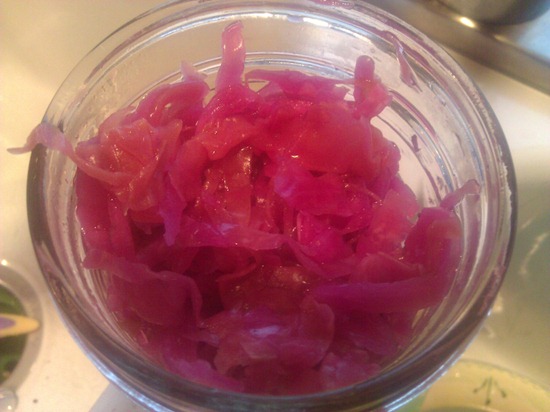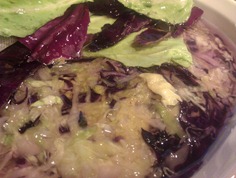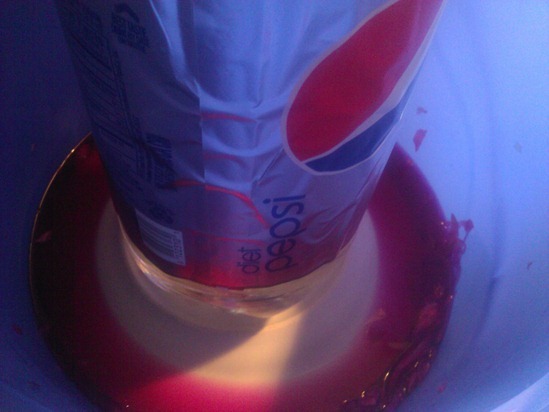How to make your own sauerkraut
12.3 years ago cabbage, cheap, sauerkraut
Sauerkraut is not only a tasty condiment to add to a hot dog or various German dishes but also is loaded with tons of beneficial bacteria which can help enhance your gut flora to make you more regular but also aid in allowing your body to absorb more nutrients from the foods you eat leading to higher satiety. So in simple terms sauerkraut can actually help you lose weight.
Now before you head off to the grocery store to buy yourself a tub of sauerkraut, if it comes in a jar most likely it has been cooked killing all the beneficial bacteria…assuming it was actually fermented to begin with. Some sauerkraut is sold as basically cabbage soaked in vinegar, though it may taste similar it does not have the added health benefits. Though you probably can find some fresh sauerkraut at a specialty store in your area it is actually very easy to make with only two ingredients required.
Step 1: Slice the cabbage. Start with with 2 heads of cabbage (for pink sauerkraut like mine above use equal amounts of red and green cabbage) and cut into each one into quarters. Remove the hearts (the non leafy part in the middle) and either discard or even better set aside to create some tasty pickled cabbage hearts. Use a nice big/sharp knife and slice the cabbage as thin as you can. If you have a cabbage shredder or mandoline slicer
go ahead and take advantage of these. If you find any pieces that seem a little large go ahead and give them an extra chop.
Step 2: Layer with salt. Portion out 3 tablespoons of non-iodized salt (kosher, pickling, or sea salt are great choices) this is because iodine many times is used to kill bacteria in water and in the case we want to keep those little buggers alive and kicking. Take a couple handfuls of sliced cabbaged and lay as a layer into a kraut pot, food grade plastic bucket
, or any other non-reactive container that will easily hold your pile of cabbage. Over each layer apply a sprinkling of salt and repeat until all of your cabbage and salt are in your container.
Step 3: Mash the cabbage. Now there are official tools for this job but any sort of blunt object will do. Some ideas (end of a baseball bat, mason jar, large piece of dowel, you get the idea) All you do is beat the crap out of the cabbage to help get the water to begin leaching out. At the end of the process you should have enough liquid to cover the cabbage. If you do not have enough let it sit for up to 24 hours and see if the salt draws some remaining water out of the cabbage. If you still do not have enough water to cover add some distilled water (tap water has chlorine and will kill our bacteria friends) along with 1 teaspoon of non-iodized salt for each cut of water.
Step 4: Drown the cabbage. Now it is time for some fermentation, this chemical process needs to be completed in an environment free from oxygen otherwise again out little friends will bite the bullet. Cabbage floats in water so we need to drown the stuff, this is pretty easy by taking an object approximately the diameter of your container and weight it down with container filled with water for example. Cover this with plastic grocery bag, secure with rubber bands or string in you have fruit fry problems in your area.
Step 5: Let the fermentation process do its thing. After about a week the liquid will change from smelling like the salty ocean to more like vinegar. At this point you can eat some, but for the full benefits and bolder taste give it 3-4 weeks to fully ferment.
Once your batch is done you can store in the refrigerator for up to 6 months, if you find yourself going through the stuff well before its 6 month time is up you can scale up your quantities or maybe even invest in an official German Sauerkraut Pot which is a little expensive for me, but would look better than the bucket sitting on my counter with a plastic grocery bag cover and comes with a ceramic weight that fits perfectly to the diameter of the kraut pot…






